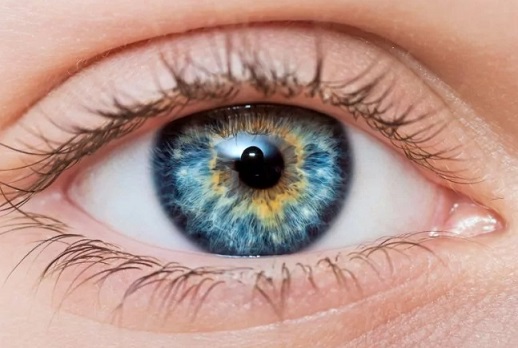The Role of Extraocular Muscles in Eye Pressure Regulation in Thyroid Eye Disease
Nikhil Prasad Fact checked by:Thailand Medical News Team Feb 24, 2025 1 month, 3 weeks, 1 day, 13 hours, 6 minutes ago
Medical News: A groundbreaking study has shed light on the correlation between changes in extraocular muscles and intraocular pressure following anti-inflammatory therapy in patients with active thyroid eye disease. The research, conducted by experts from Osaka Metropolitan University and Kobe Kaisei Hospital in Japan, provides critical insights into how treatment for thyroid eye disease affects eye pressure.
 The Role of Extraocular Muscles in Eye Pressure Regulation in Thyroid Eye Disease
The Role of Extraocular Muscles in Eye Pressure Regulation in Thyroid Eye Disease
Thyroid eye disease (TED) is an autoimmune condition that causes inflammation of the eye muscles and surrounding tissues, leading to symptoms such as swelling, bulging eyes, double vision, and eye discomfort. In some cases, TED can also result in increased intraocular pressure (IOP), which can contribute to the risk of developing glaucoma. This
Medical News report delves into the findings of this extensive study, which aimed to explore how anti-inflammatory treatment impacts the eye structures and pressure levels in patients suffering from TED.
Study Overview and Methodology
The study reviewed the medical records of 51 patients (99 eyes) diagnosed with active TED who received corticosteroid therapy between 2014 and 2023. None of these patients were using glaucoma eye drops at the time of treatment. Using magnetic resonance imaging (MRI), researchers measured various parameters before and after treatment, including changes in intraocular pressure, the cross-sectional area of extraocular muscles, and the signal intensity ratio of orbital fatty tissue.
The patients were divided into two groups based on their corticosteroid dosage. One group received a total of 6 grams of methylprednisolone, while the other received 9 grams. Both groups underwent orbital radiotherapy as part of the treatment. By analyzing these data points, researchers aimed to determine the relationship between intraocular pressure and changes in the extraocular muscles due to anti-inflammatory therapy.
Key Findings on Intraocular Pressure and Extraocular Muscles
One of the most significant findings of the study was the overall reduction in intraocular pressure after treatment. Prior to therapy, the average intraocular pressure in these patients was 18.0 mmHg. After treatment, this number dropped significantly to 15.5 mmHg. Both dosage groups (6g and 9g) experienced a substantial decline in eye pressure, confirming the effectiveness of anti-inflammatory therapy in reducing IOP.
Additionally, researchers found that the cross-sectional area of the extraocular muscles decreased following treatment. The inferior rectus muscle, in particular, showed a notable reduction in size, which was closely correlated with the decrease in intraocular pressure. The study also observed that the signal intensity ratio of the extraocular muscles and orbital fatty tissue significantly decreased, indicating reduced inflammation.
The Role of Extraocular Muscles in Eye Pressure Regulation
One of the primary conclusions drawn from the study was the critical r
ole that extraocular muscle swelling plays in increasing intraocular pressure. When these muscles become inflamed and enlarged, they create added pressure within the confined space of the eye socket, leading to an increase in eye pressure. By reducing this inflammation through corticosteroid therapy and radiotherapy, intraocular pressure can be effectively lowered.
The research also indicated that the inferior rectus muscle (the muscle controlling downward eye movement) was the most affected by swelling and had the highest correlation with changes in intraocular pressure. This finding suggests that evaluating and monitoring this muscle could help predict potential eye pressure complications in TED patients.
Implications for Treatment and Future Research
The results of this study provide valuable guidance for doctors treating patients with thyroid eye disease. Since anti-inflammatory therapy alone was able to significantly reduce intraocular pressure, the need for additional glaucoma eye drops may not be necessary in many cases. This could help reduce the financial burden on patients and limit potential side effects associated with glaucoma medications.
Moreover, these findings highlight the importance of early diagnosis and treatment of TED to prevent complications such as increased intraocular pressure and potential vision loss. Future research could explore whether newer treatment options, such as biologic therapies, might further improve outcomes for TED patients.
Conclusion
This study offers compelling evidence that anti-inflammatory therapy significantly reduces intraocular pressure in patients with active thyroid eye disease. The correlation between extraocular muscle swelling and eye pressure underscores the importance of addressing inflammation as part of TED treatment. By focusing on reducing muscle inflammation, doctors can help protect patients from the long-term risks associated with elevated intraocular pressure and potential glaucoma development.
The study findings were published in the peer-reviewed journal: Journal of Clinical Medicine.
https://www.mdpi.com/2077-0383/14/5/1480
For the latest on Thyroid Eye Disease, keep on logging to Thailand
Medical News.
Read Also:
https://www.thailandmedical.news/news/s-petasin-activates-the-nrf2-signalling-pathway-to-protect-retinal-cells-from-damage-due-to-oxidative-stress
https://www.thailandmedical.news/news/taiwanese-study-uncovers-dietary-supplements-that-can-help-in-the-treatment-of-dry-eye-syndrome
https://www.thailandmedical.news/news/taiwanese-study-uncovers-the-benefits-of-cassiae-tea-for-eye-health-in-the-elderly-and-smartphone-users
https://www.thailandmedical.news/articles/ophthalmology-(eye-diseases)
https://www.thailandmedical.news/articles/glaucoma-news
https://www.thailandmedical.news/pages/thailand_doctors_listings
